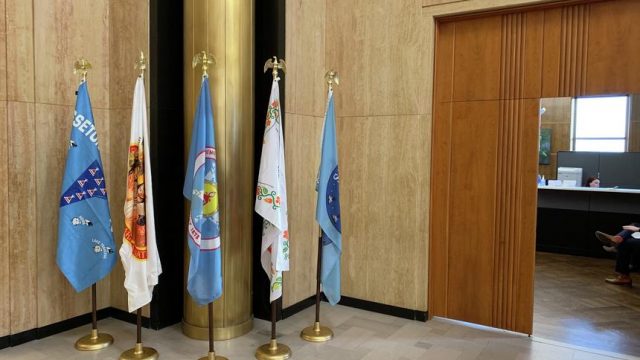Kudos to Governor Doug Burgum for Displaying Tribal Flags

I meant to write about this yesterday, but one of the best moments of Governor Doug Burgum’s State of the State address to lawmakers was his decision to announce that his office will be displaying the flags of North Dakota’s Native American tribes.
“Gov. Doug Burgum’s announcement that his office would display the flags of North Dakota’s five tribal nations was one of the more warmly received parts of his State of the State address Thursday, Jan. 3,” my colleague John Hageman reports. “It was also somewhat of a spur-of-the-moment declaration that wasn’t included in his prepared remarks provided to reporters.”
The Gov got a little emotional when he made the announcement. Here’s the video, if you weren’t watching live yesterday:
It wasn’t planned – apparently Burgum was inspired by the traditional State-Tribal Relationship address delivered earlier in the day – but the issue of displaying the flags isn’t new.
Sen. Richard Marcellais, a Democrat from Belcourt and member of the Turtle Mountain Band of Chippewa, has been introducing legislation to mandate display of the flags for a while now. Most recently it was defeated in the 2017 session.
I supported that legislation. I touted it in a print column about ways in which the Legislature and the state’s tribes could repair relationships in the aftermath of the ugly, violent protests against the Dakota Access Pipeline. “Symbolic, sure, but an important gesture I think,” I wrote of the legislation at the time. “One which tells our tribal neighbors that they, too, are a part of our state.”
Burgum’s actions merely impacts the display of flags outside of his office. The Marcellais bill from 2017 would have had the flags displayed in the legislative chambers, as well as in the state Supreme Court:
While Burgum has done a very good thing, one that’s powerful in its symbolism, I think there’s still work the Legislature can do on this front. Because, again, Burgum’s announcement only impacts the display outside of his office.
Lawmakers should still pass legislation similar to what Marcellais has proposed.
The tribes are sovereign, but the tribal members are North Dakotans too. They vote for state lawmakers, and statewide officials. Their grievances are heard in our courts. Too often we treat the tribal communities as somehow apart from the rest of our state. And, to be fair, there are times when certain factions in the tribe work to create that divide as well.
We need more unity. These flags may be mere symbolism, but symbols matter.





